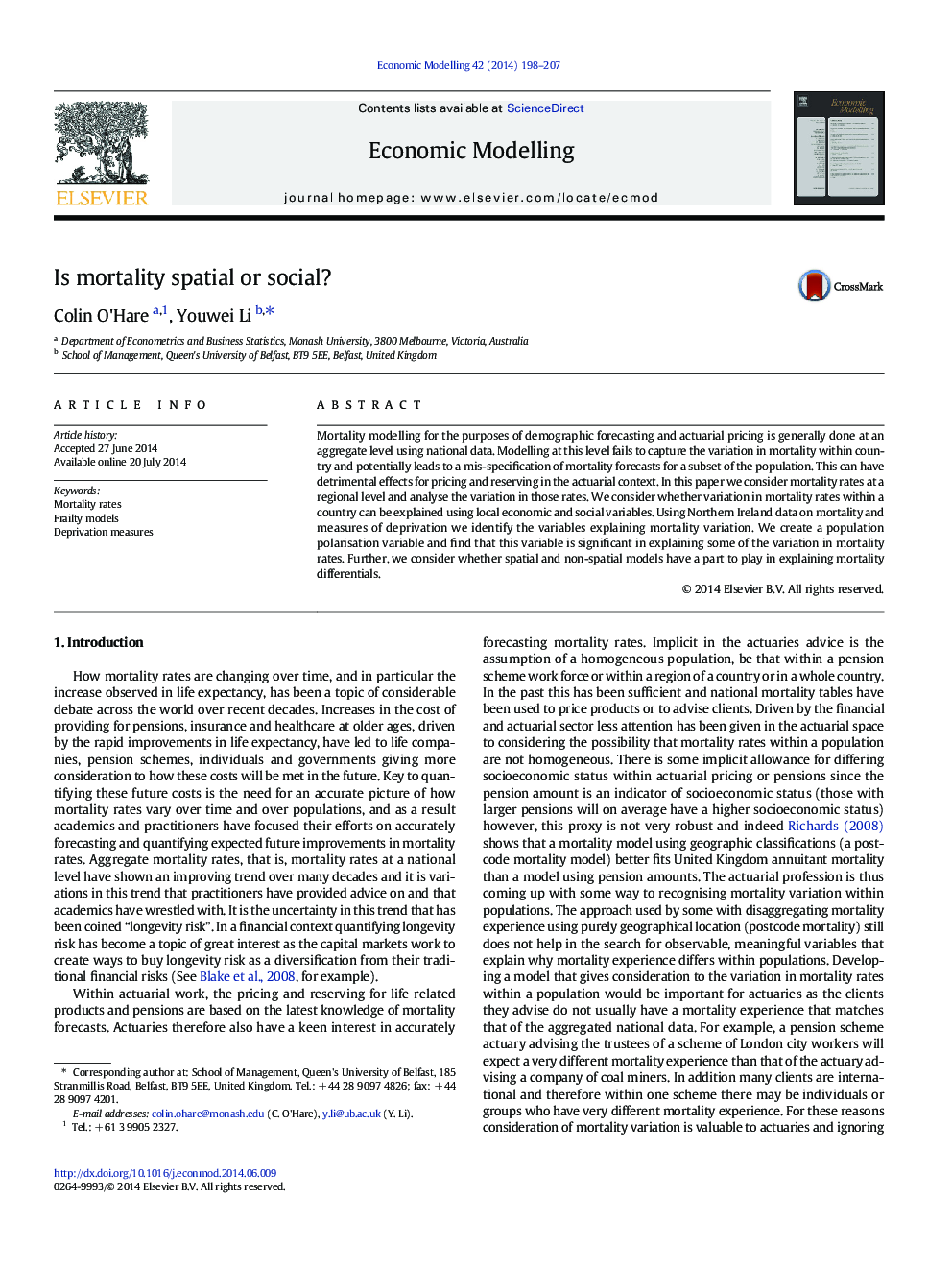| Article ID | Journal | Published Year | Pages | File Type |
|---|---|---|---|---|
| 5054019 | Economic Modelling | 2014 | 10 Pages |
â¢Mortality modelling is generally done at an aggregate level using national data.â¢We consider mortality rates at a regional level.â¢We use Northern Ireland data on mortality and measures of deprivation.â¢We create a population polarisation variable to explain mortality rates.â¢We consider spatial and non-spatial models in explaining mortality differentials.
Mortality modelling for the purposes of demographic forecasting and actuarial pricing is generally done at an aggregate level using national data. Modelling at this level fails to capture the variation in mortality within country and potentially leads to a mis-specification of mortality forecasts for a subset of the population. This can have detrimental effects for pricing and reserving in the actuarial context. In this paper we consider mortality rates at a regional level and analyse the variation in those rates. We consider whether variation in mortality rates within a country can be explained using local economic and social variables. Using Northern Ireland data on mortality and measures of deprivation we identify the variables explaining mortality variation. We create a population polarisation variable and find that this variable is significant in explaining some of the variation in mortality rates. Further, we consider whether spatial and non-spatial models have a part to play in explaining mortality differentials.
